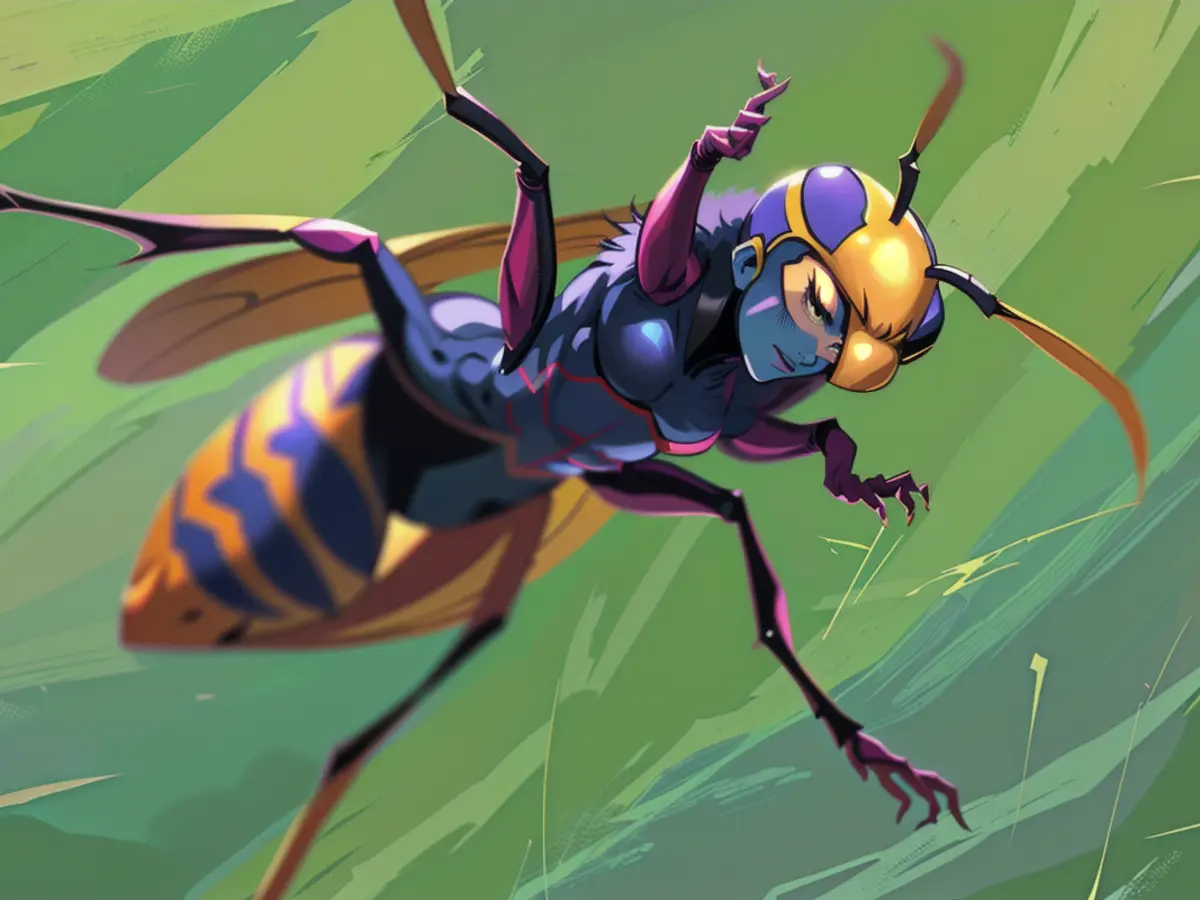Bugs: These Creeping Creatures - Excessive excitement over the Asian hornet: Frequently misunderstood
In response to mounting apprehensions about the Asian hornet, insect advocates urge for calm. The Nature and Biodiversity Conservation Union (NABU) has received numerous queries and emails from citizens expressing alarm. However, Sabine Holmgeirsson from NABU Baden-Württemberg points out that half of these reports are inaccurate. "If you scrutinize insects more closely," she explains, "you can tell different species apart and appreciate their positive attributes."
Despite the intense focus on the Asian hornet, the European hornet is vigilantly protected. "A lot of accusations are being directed at the Asian hornet," says Holmgeirsson. "This hype has gotten out of control. People are no longer familiar with one another. Often, all it takes is a quick Google search."
The two hornet species can be differentiated based on their legs. If they are dark, it indicates the indigenous species. To better observe and appreciate the intriguing insects that hunt other insects, including pests, in gardens and meadows, Holmgeirsson suggests observing the hornets carefully. Additionally, the invasive species is only active during the day. "If you see a hornet flying during the night near its nest," she adds, "then it's likely a European hornet. My suggestion: Turn off the lights and open the windows; hornets are active at night and are attracted to light."
The Asian yellow-footed hornets are slightly smaller and darker than their European counterparts. Workers of the Asian hornet measure up to 2.5 centimeters in length, and queens can reach up to 3 centimeters. The European hornet's workers extend up to 3 centimeters in length, and queens up to 3.5 centimeters. The native hornet features a yellow-black striped abdomen.
The nest-building behavior also differs. The European hornet queen constructs a hand-sized foundational nest (primary nest) in the spring, which is often situated in sheds or bushes. She then creates secondary nests, or tertiary nests, in the summer and hangs them in trees. These nests are about 75 by 70 centimeters in size and are located in the treetops over 10 meters high.
The Asian hornet's European cousin, on the other hand, takes refuge in weather-protected hollow spaces like tree holes, nest boxes, attics, or roller blind boxes. The entrance holes of the Asian hornet's nests are usually on their sides, while the European hornet's nests have openings at their base.
The Asian hornet's rapid proliferation in the southwest has sparked alarm among nature conservatives. This species, responsible for wiping out around 40% of honeybees but also feeding on other insects, has a large presence in the southwest, according to the Ministry of the Environment.
Nature conservationists, such as those in Baden-Württemberg, are concerned. In 2021, 550 nests were detected - an uptick of 20 times compared to the previous year. It's unknown what the hidden number of nests is, but the Baden-Württemberg beekeepers' association predicts four times more nests this year, estimating that over 1000 nests will be identified by the end of the year. NABU, however, is uncertain about the Asian hornet's relationship with the native and protected European hornet, as well as the consequences of preying on other insects.
Read also:
- Tough return to normality in snow and ice
- Fewer unauthorized entries: Domino effect through controls
- Trial against BND employee from mid-December
- Xhaka leads Leverkusen to triumph in cup tournament, scoring two goals.
- In Baden-Württemberg, the Nature Conservation Association Germany (NABU) encourages prudence towards insects, highlighting that many reported Asian hornet sightings are mistaken.
- Contrary to popular belief, Animals like the European hornet are protected in Germany, despite the hype surrounding the Asian hornet.
- To distinguish between the Asian and European hornets, Holmgeirsson suggests observing their leg color and behavior, as the Asian hornet is active during the day and is attracted to light.
- The Nature and Biodiversity Conservation Union Germany (NABU) Baden-Württemberg has reported a significant increase in Asian hornet nests in 2021, with predictions of over 1000 nests this year.
- Despite the Asian hornet's negative impact on honeybees and other insects in nature conservation, the relationship between the two hornet species and their consequences remain unclear, prompting further research from organizations like NABU.
Source: www.stern.de








